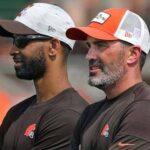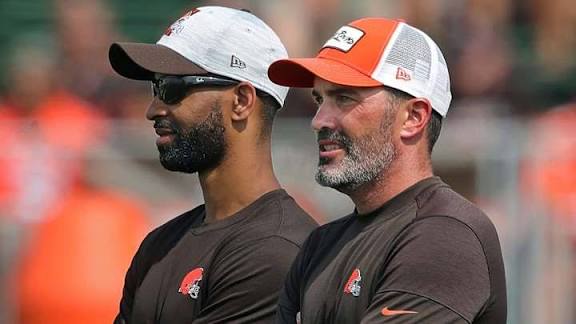LIV Golf, a Saudi-backed startup, upended the professional golf world when it emerged in 2021. PGA Tour loyalists decried the new league, but many high-profile golfers joined anyway. Here’s what happened next.
Think about golf, and you picture sun-soaked fairways, perfectly manicured greens, and commentators providing play-by-plays in hushed, nearly reverent tones — hardly a place you’d expect to find a battleground brewing. But that’s just what happened between the PGA Tour, organizer of North America’s largest professional golf tournaments, and LIV Golf, an upstart contingent backed by the Saudi government.
LIV Golf was a high-profile part of Saudi Arabian Crown Prince Mohammed bin Salman’s strategy to transition his kingdom’s economy away from its one-note dependence on oil. Through a plan entitled Vision 2030, Saudi Arabia has spent billions in the hopes of generating more tourism revenue — and, critics add, deflecting attention from its human rights abuses.
The money, which comes from Saudi Arabia’s $925 billion Public Investment Fund, has built high-end resorts and futuristic cities, bought majority ownership stakes in big-name sports franchises (like the Newcastle United Premier League soccer team), and hosted major tournaments in professional wrestling, tennis, and golf. LIV Golf was founded in 2021.
In order to entice top talent to its roster, LIV reportedly offered players $100 million guaranteed contracts to defect from the PGA Tour. The PGA responded in turn by suspending PGA players who participated in the inaugural LIV Golf Invitational, adding that anyone who competed in “unauthorized tournaments” would be barred from returning to the PGA for one year.

Lawsuits followed; the U.S. Department of Justice began an antitrust probe — Golf Digest likened it to a “civil war.” Shockingly, in July 2023, LIV Golf and the PGA called a truce, surprising everyone with a promise to end their battles and join forces going forward.
But just how did that happen? And, perhaps more importantly, what comes next?
PGA Tour players compete in weekly tournaments from January through September and participate in four annual “majors:” The Masters, the US Open, the British Open, and the PGA Championship.
Until LIV burst onto the scene, the world’s best golfers were PGA players: Tiger Woods, Scottie Scheffler, Sahith Theegala, and Collin Morikawa, for example, all signed non-compete contracts to be part of the PGA Tour, as did Jack Nicklaus, Arnold Palmer, and Sam Snead before them.
The first word in LIV Golf isn’t a word at all; it’s actually the Roman numeral 54. That’s the number of holes played during LIV tournaments — and it’s also the score a player would receive if they birdied every hole on a par-72 course. LIV has even dangled a $54 million bonus as a reward for any player who achieves that near-impossible feat (ostensibly when LIV hosts 72-hole tournaments).
In its inaugural season, LIV signed former PGA Tour players Dustin Johnson, Sergio Garcia, and Martin Kaymer; in 2022, Phil Mickelson, Brooks Koepka, Bryson DeChambeau, and Patrick Reed accepted the offer, and shortly after he won the Masters in 2023, Jon Rahm joined LIV as a team captain.
LIV is marketed as “the future of golf,” and its CEO and Commissioner is Greg Norman, a 20-time PGA champion who is considered to be one of the game’s biggest disruptors.
Norman’s assertive playing style earned him two wins at the British Open, but it also translated into a lucrative career off the fairway: The Greg Norman Company owns more than a dozen ventures, including a golf course design firm, an activewear clothing line, a commercial real estate business, a vineyard, a restaurant, a Wagyu beef brand, and a private equity fund, to name a few.
When Golf Digest put together its list of 50 highest-paid players in 2023, it estimated Norman’s endorsements at $35 million and his salary from LIV to be $50 million, although other outlets reported it could be as high as $800 million — a staggering sum.
Norman actually attempted to launch a golf league of his own in 1994. His World Tour would have offered guaranteed contracts to a select number of top players to compete in tournaments and complement the PGA Tour schedule, but it was rejected by top brass. Therefore, the opportunity from LIV seem

